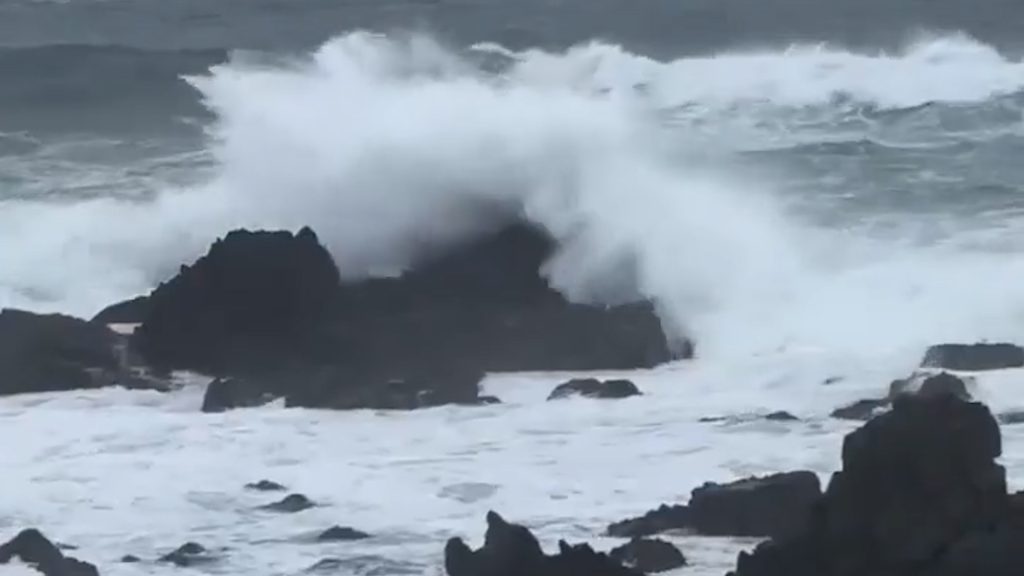The confluence of severe weather systems across the United States is poised to significantly disrupt holiday travel plans for millions of Americans as 2023 draws to a close. A potent combination of powerful thunderstorms in the South and relentless Pacific storms in the West is creating a challenging travel landscape, impacting both air and ground transportation. The National Weather Service (NWS) has issued stark warnings for severe weather, including the potential for strong tornadoes, damaging winds, and large hail, across a swathe of the Southern states, encompassing Louisiana, Mississippi, and Alabama. This severe weather threat adds another layer of complexity to the already busy holiday travel season, which is projected to witness record-breaking numbers of travelers.
The severe weather threat in the South is primarily focused on Saturday, with the NWS highlighting the possibility of strong tornadoes. The Storm Prediction Center has also indicated an elevated risk of severe weather extending to the Gulf Coast, including parts of Louisiana and the Florida Panhandle. These volatile atmospheric conditions are expected to generate hazardous conditions for travelers, potentially leading to flight delays and cancellations, as well as hazardous road conditions. The timing of this severe weather outbreak coincides with the peak holiday travel period, further exacerbating the potential for disruptions and delays.
Concurrently, a series of Pacific storms is impacting the Western United States, bringing a deluge of heavy snow to mountainous regions, drenching rain to lower elevations, and powerful winds that are creating widespread travel challenges. The heavy snow is expected to significantly impact travel over mountain passes, potentially leading to road closures and hazardous driving conditions. The combination of snow, rain, and strong winds also poses a threat to air travel, with the potential for flight delays and cancellations. These conditions have already begun to impact air travel, with reports of hundreds of flights cancelled on Thursday and Friday, leading to cascading delays and disruptions across the national airspace system.
The convergence of these two distinct weather systems – severe thunderstorms in the South and powerful Pacific storms in the West – creates a complex and challenging scenario for holiday travelers. The timing of these weather events coincides with one of the busiest travel periods of the year, adding further strain to an already stressed transportation infrastructure. The holiday travel season, projected to involve a record-breaking 119.3 million people traveling 50 miles or more, according to AAA, is facing significant headwinds due to these widespread weather disruptions. The Transportation Security Administration (TSA) also anticipates a surge in air travel, with nearly 40 million people expected to pass through airport security checkpoints between December 19 and January 2, further compounding the potential for delays and disruptions.
These projected travel numbers underscore the magnitude of the potential impact of these weather systems. Millions of Americans are embarking on holiday journeys to reunite with family and friends, and these weather events threaten to disrupt their plans and create stressful travel experiences. The combination of heavy snow, rain, strong winds, and the potential for tornadoes creates a hazardous environment for both air and ground transportation. Travelers are advised to closely monitor weather forecasts, check with their airlines and transportation providers for updates, and be prepared for potential delays and disruptions. Flexibility and patience will be crucial for navigating the challenges posed by these adverse weather conditions.
The confluence of these severe weather systems across the United States serves as a stark reminder of the potential impact of extreme weather events on travel and daily life. As climate change continues to influence weather patterns, the frequency and intensity of such events are expected to increase, posing ongoing challenges to transportation infrastructure and travel planning. The current situation underscores the need for robust emergency preparedness plans, effective communication strategies, and a resilient transportation system capable of adapting to the increasing challenges posed by extreme weather. Travelers are encouraged to stay informed, exercise caution, and prioritize safety during this challenging holiday travel period.










